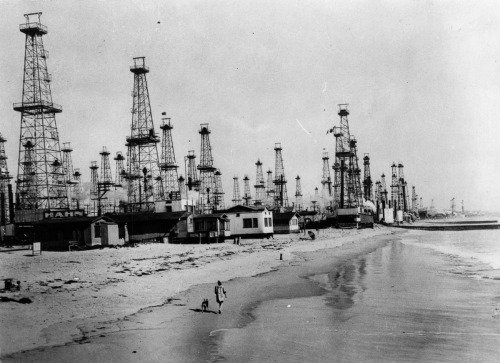The Moon Parka - A Jacket Made Of Synthetic Spider Silk




The Moon Parka - A jacket made of synthetic spider silk
Remember the Japanese biomaterials company Spiber? In 2013, they presented a cocktail dress made of Qmonos (from the Japanese word kumonosu meaning ‘spider web’), their present 11-year-10-design-iterations-and-656-gene-synthesis synthetic version of stronger than steel and more flexible than nylon lightweight spider silk.
Snip from geek.com:
The end result of all that research is a method for producing artificial spider silk through a fermentation process using bioengineered microorganisms to produce the silk proteins. A real spider can only produce so much silk, but an engineered cell that does nothing but spit out silk proteins can be used to scale production up quickly.
Now they presented in collaboration with The North Face a new prototype called The Moon Parka, which is currently touring North Face stores across Japan. It’s intended to show that practical applications of spider silk are possible (cost is now 1/53,000 of what it was in 2008). Spiber aims to deliver the final product next year. Presumably only in Japan. But fingers crossed for a worldwide rollout at reasonable prices.
Watch their promo-launch video below:
[North Face x Spiber] [Spiber] [picture by North Face]
More Posts from Dotmpotter and Others

Tinysaur, Tiny Dinosaur Fossil Models You Can Build Yourself










Drilling for oil on Venice Beach | Via
Native Americans first discovered oil in California, as it seeped to the surface of the earth. They used it as a lubricant and sealant for canoes. It was later used for similar purposes by Spanish colonizers.
As the state’s population boomed in the decades following the gold rush of 1849, there was a rapidly growing demand for petroleum.
Drilled in 1876, the first commercially successful oil well in California was Well No. 4 in the Pico Canyon Oilfield in the Santa Susana Mountains.
More discoveries followed, from the Los Angeles City Oil Field in 1892 to Huntington Beach in 1920 and Long Beach in 1921.
By 1920, California was producing 77 million barrels of oil a year, and vast stretches of the state were occupied by derricks, drilling rigs and refineries.
In places such as Venice, California (now known as Marina del Rey), oil derricks ran right up to the shore, mingling with residential neighborhoods and pristine beaches.
Car accidents aren't accidents

The use of the term “accident” gives cops and courts the cover to excuse murder. In a brutal editorial, Hsi-Pei Liao talks about his daughter, who was killed by a driver when she was three. The driver got a ticket for failure to yeild and failure to use due care, and those tickets were eventually thrown out by a DMV judge who considered the case for 47 seconds.
I was nearly killed by a hit-and-run drunk driver when I was 21, who was caught and then given a $1,000 fine and a six month license suspension (when he hit me, he was already driving without a license, having had his license pulled for a previous DUI). The Ontario prosecutor didn’t give me notice of the hearing and I wasn’t allowed to testify or give a victim impact statement.
Big city cops, especially the NYPD and SFPD, are notorious for excusing people who kill with their cars, especially when the victims are cyclists. An activist group called Families for Safe Streets is campaigning to replace the term “accident” – which implies that the incident was a kind of unpredictable, unavoidable effect of the universe’s uncooperative inanimate objects – with “crash.”
In New York City, they campaigned for the Right of Way Law, which came into effect in June 2014, which allows “police to bring a misdemeanor charge if a driver kills or seriously injures someone who has the right of way in a crosswalk or a bike lane.” It’s pretty amazing that a new law was needed for this – but even more amazing was the city bus drivers’ campaign against the law, because they didn’t want to “criminalize accidents.”
Read the rest










Breathtaking Images of Underwater Life Captured by Freediving Photographers Alex Voyer and Alex Roubaud



Paint job transforms walls into sensors, interactive surfaces
Smart walls react to human touch, sense activity in room
Walls are what they are – big, dull dividers. With a few applications of conductive paint and some electronics, however, walls can become smart infrastructure that sense human touch, and detect things like gestures and when appliances are used.
Researchers at Carnegie Mellon University and Disney Research found that they could transform dumb walls into smart walls at relatively low cost – about $20 per square meter – using simple tools and techniques, such as a paint roller.
These new capabilities might enable users to place or move light switches or other controls anywhere on a wall that’s most convenient, or to control videogames by using gestures. By monitoring activity in the room, this system could adjust light levels when a TV is turned on or alert a user in another location when a laundry machine or electric kettle turns off.
“Walls are usually the largest surface area in a room, yet we don’t make much use of them other than to separate spaces, and perhaps hold up pictures and shelves,” said Chris Harrison, assistant professor in CMU’s Human-Computer Interaction Institute (HCII). “As the internet of things and ubiquitous computing become reality, it is tempting to think that walls can become active parts of our living and work environments.”
Read more.


HiPOD (2 May 2018): Clays in a Grouping of Small Craters
— 282 km above the surface. Black and white is 5 km across; enhanced color is less than 1 km.
NASA/JPL/University of Arizona
-
 dqmvrn reblogged this · 2 years ago
dqmvrn reblogged this · 2 years ago -
 dqmvrn liked this · 2 years ago
dqmvrn liked this · 2 years ago -
 gabesun liked this · 5 years ago
gabesun liked this · 5 years ago -
 cascadiarise reblogged this · 6 years ago
cascadiarise reblogged this · 6 years ago -
 octobersmoke liked this · 6 years ago
octobersmoke liked this · 6 years ago -
 mcflurrymachinebroke liked this · 7 years ago
mcflurrymachinebroke liked this · 7 years ago -
 luuky34 liked this · 7 years ago
luuky34 liked this · 7 years ago -
 buddhable liked this · 8 years ago
buddhable liked this · 8 years ago -
 jamboss liked this · 8 years ago
jamboss liked this · 8 years ago -
 frau-maus reblogged this · 8 years ago
frau-maus reblogged this · 8 years ago -
 mickey-the-doll liked this · 8 years ago
mickey-the-doll liked this · 8 years ago -
 isocryme liked this · 8 years ago
isocryme liked this · 8 years ago -
 isocryme reblogged this · 8 years ago
isocryme reblogged this · 8 years ago -
 health--tech--news-blog reblogged this · 8 years ago
health--tech--news-blog reblogged this · 8 years ago -
 rrresources reblogged this · 8 years ago
rrresources reblogged this · 8 years ago -
 thekingofrock liked this · 8 years ago
thekingofrock liked this · 8 years ago -
 puppypowernyphilly liked this · 8 years ago
puppypowernyphilly liked this · 8 years ago -
 iwanttopoophere reblogged this · 8 years ago
iwanttopoophere reblogged this · 8 years ago -
 iwanttopoophere liked this · 8 years ago
iwanttopoophere liked this · 8 years ago -
 vlazhno liked this · 8 years ago
vlazhno liked this · 8 years ago -
 noahmhf liked this · 8 years ago
noahmhf liked this · 8 years ago -
 iwishtobecreative reblogged this · 9 years ago
iwishtobecreative reblogged this · 9 years ago -
 chill2002 liked this · 9 years ago
chill2002 liked this · 9 years ago -
 nervousforbirds reblogged this · 9 years ago
nervousforbirds reblogged this · 9 years ago -
 cyanasure reblogged this · 9 years ago
cyanasure reblogged this · 9 years ago -
 7hylacine liked this · 9 years ago
7hylacine liked this · 9 years ago -
 blackyearlings-blog reblogged this · 9 years ago
blackyearlings-blog reblogged this · 9 years ago -
 sloppijo-blog liked this · 9 years ago
sloppijo-blog liked this · 9 years ago -
 orelmente reblogged this · 9 years ago
orelmente reblogged this · 9 years ago -
 scientificorient reblogged this · 9 years ago
scientificorient reblogged this · 9 years ago -
 scientificorient liked this · 9 years ago
scientificorient liked this · 9 years ago -
 buxiposts liked this · 9 years ago
buxiposts liked this · 9 years ago -
 buxiposts reblogged this · 9 years ago
buxiposts reblogged this · 9 years ago -
 jette0382 liked this · 9 years ago
jette0382 liked this · 9 years ago -
 flannelphilosophy liked this · 9 years ago
flannelphilosophy liked this · 9 years ago -
 zlzlzlzlzlzl liked this · 9 years ago
zlzlzlzlzlzl liked this · 9 years ago -
 indiebio-blog reblogged this · 9 years ago
indiebio-blog reblogged this · 9 years ago
